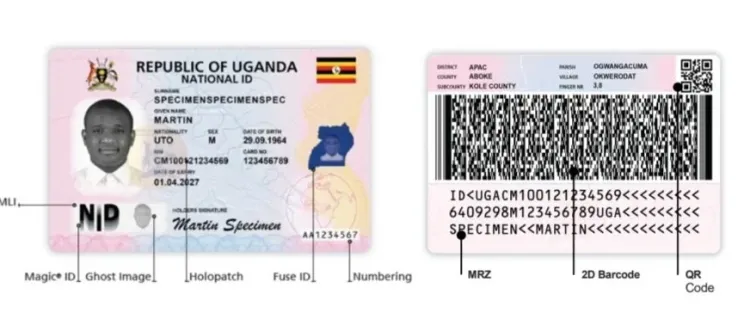The National Identification and Registration Authority (NIRA) has begun distributing more than five million newly designed National Identity Cards to districts across Uganda.
The rollout follows the mass registration and renewal exercise launched in May 2025, which targeted over 15.8 million renewals and 17.2 million new applicants, including children under 17 and those who missed the 2014 registration.
So, what do the new National IDs look like — and what’s different this time? Here’s a breakdown of their key features and what they mean for cardholders.
Enhanced Security Design
The new National IDs come with advanced anti-counterfeit protection. One of the most notable upgrades is the use of laser engraving to embed multiple images of the cardholder directly into the card’s surface. This makes duplication or alteration almost impossible, strengthening the card’s security against forgery and tampering.
Machine Readable Zone (MRZ)
Just like in modern passports, the new ID includes a Machine Readable Zone (MRZ) — a strip of coded text that can be scanned by specialised machines. This allows for faster verification at airports, banks, and government offices, improving both efficiency and data accuracy.

2D Barcode for Digital Verification
Each card carries a 2D barcode that can be scanned using smartphones or other electronic readers. The barcode stores encrypted personal information, ensuring that identity verification is quick and secure. This feature supports digital services and could pave the way for e-governance and online authentication systems in the near future.
Durable and Modern Look
The upgraded IDs are made from high-strength polycarbonate material, giving them a sleeker appearance and longer lifespan. The design reflects Uganda’s national symbols, retaining familiar features such as the national emblem and flag colours, while integrating a more polished, high-tech aesthetic.
How to Collect Your ID
According to NIRA Registrar Claire Ollama, over five million cards have already been produced and dispatched to districts nationwide.
However, she noted that collection remains slow, urging applicants to visit their nearest NIRA office where they originally registered.
“These cards are in your districts, but the pickup is still very low,” Ollama said. “Please go to your nearest office and pick up your cards.”
She explained that since registration took place in phases, the distribution will also be ongoing, with cards arriving in batches over time.
